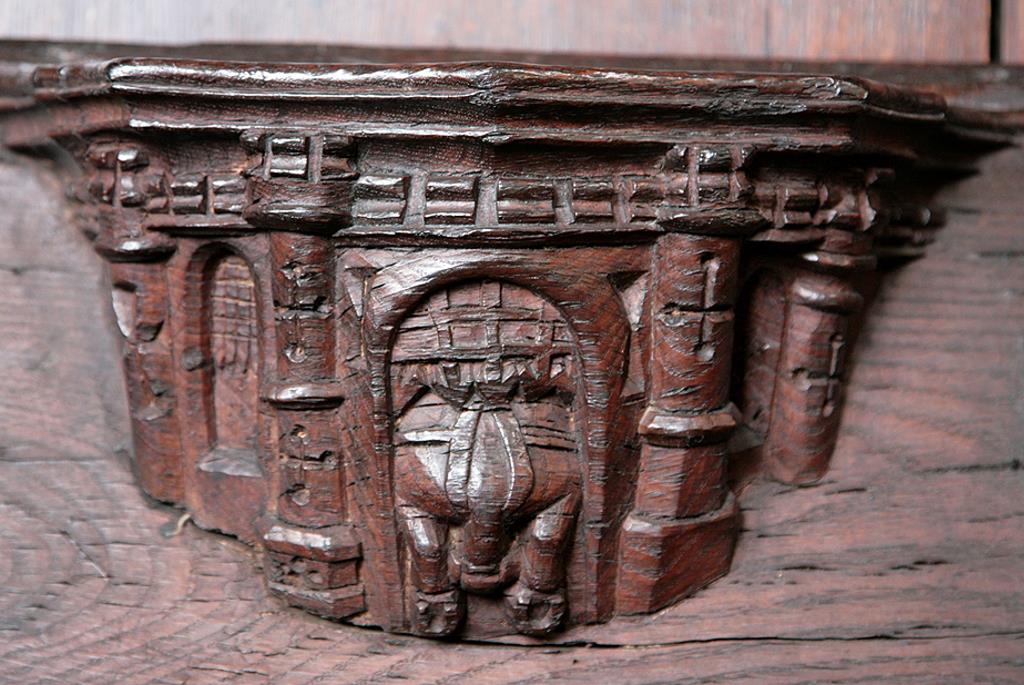Verrassingen
Sir Yvain’s horse’s rump

Any fan of English church iconography knows that a horse’s haunches protruding from a portcullis on a misericord (a hinged seat in a choir stall) must represent a scene from Chrétien de Troyes’s Yvain. This 12th-century French romance was translated into several European languages: German, English, Norse, Welsh, and was depicted in European wall paintings, manuscript illuminations, carvings, embroideries, and ivory plaques. The episode most commonly portrayed is Yvain’s rescue of a lion from a vicious dragon; the knight’s choice of good over evil gives him a new name, the knight of the lion, and a new shield emblem. Whether the faithful lion represents ideal kingship or the Christ of bestiary tradition, he seems an appropriate subject for religious iconography.
Therefore I was not surprised on a recent trip to Reykjavík to find Yvain and his lion portrayed on a beautiful Icelandic church door dating from around 1200. In the upper roundel of the Valþjófsstaður door, above the usual combat with the dragon, Yvain’s lion is depicted pining over what he mistakenly thinks is his lord’s grave. Runes identify the grave’s supposed contents, while a cross reinforces the door’s status as a Christian artefact.
What seems odd though is that English misericord carvers chose another episode to depict: Yvain mercilessly pursuing a wounded opponent into his castle, risking his own life and cutting his horse in two. Why? The answer has to be English clerical humour. Rather than a moral allegory, this is a visual joke. So, in Boston, Chester, Lincoln, Enville and New College, Oxford, we should not be surprised after all to find, alongside grotesque creatures, characters from the comic fabliaux and the trickster Reynard the Fox, Yvain’s horse’s rump.
Karen Pratt
Image
The image is of a late 14th-century misericord in St Botolph’s Church, Boston, Lincolnshire.

